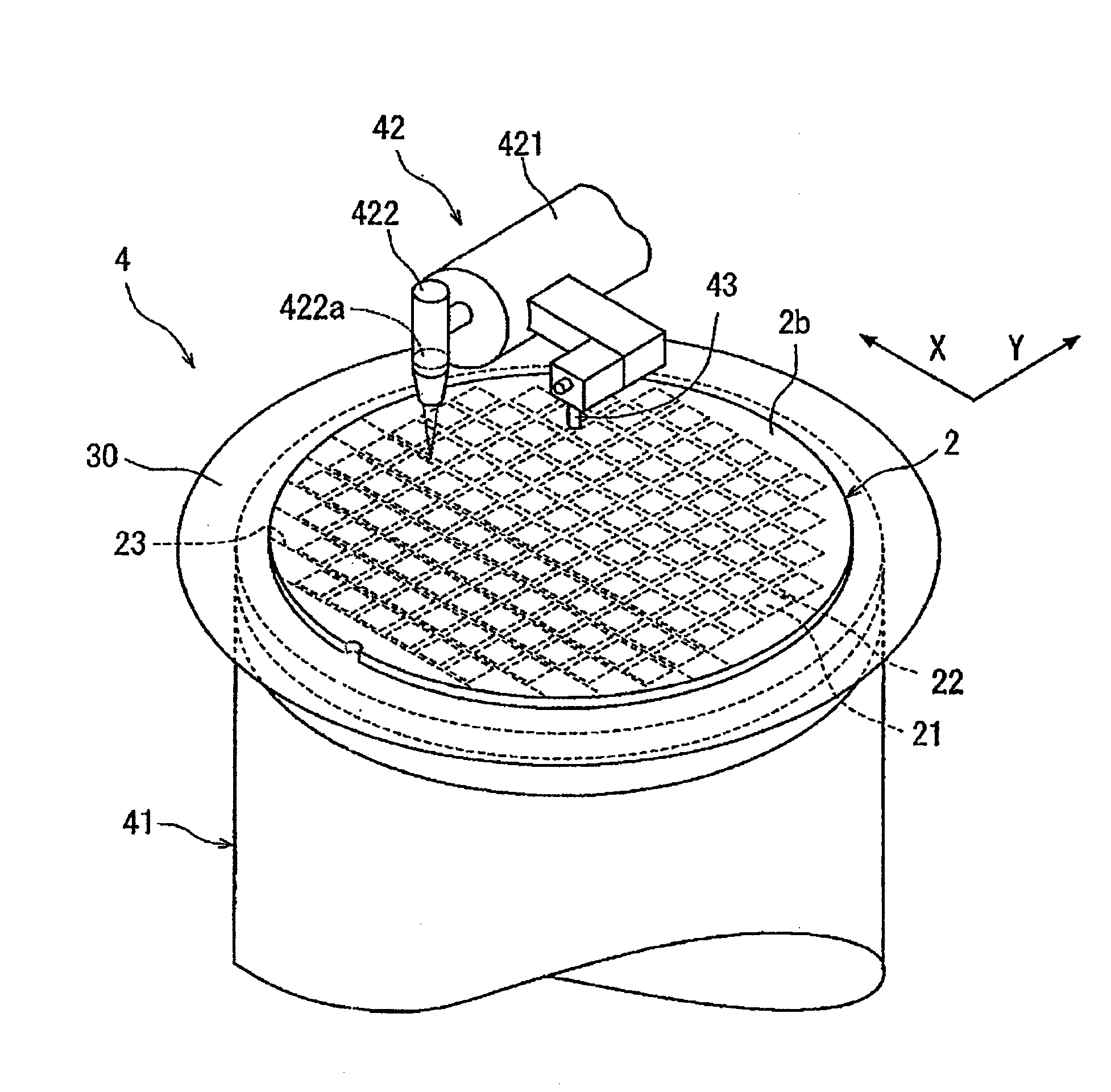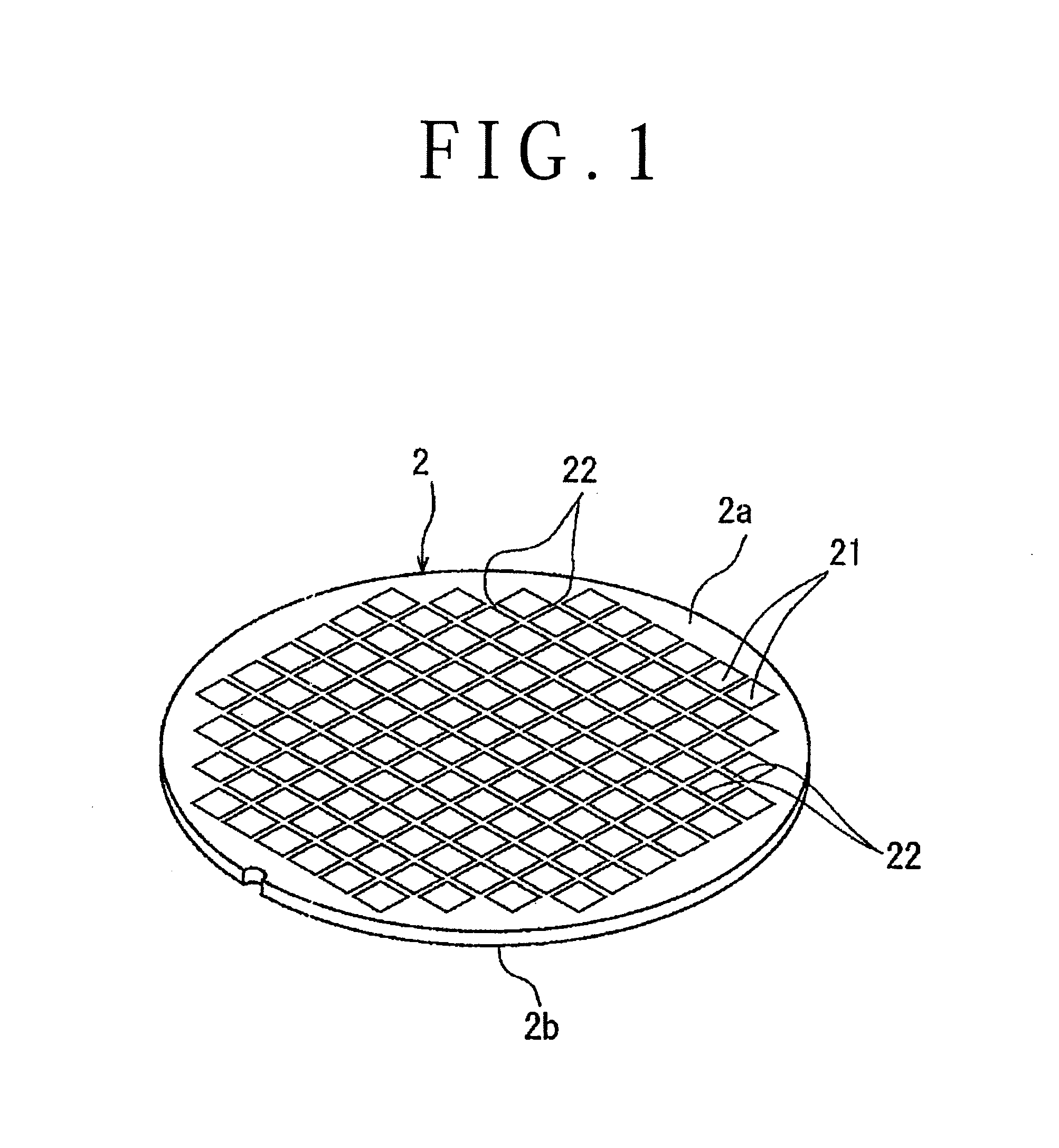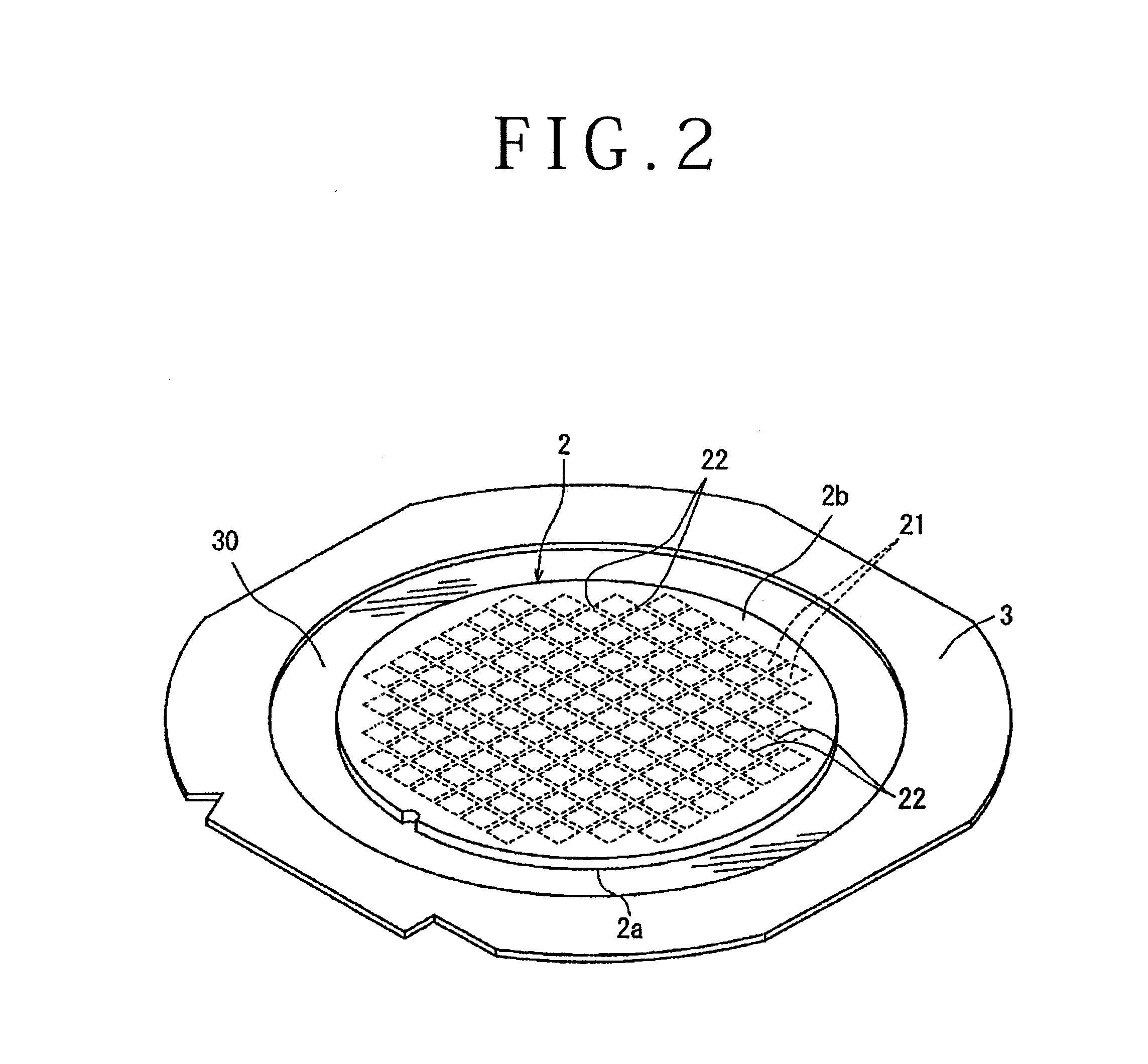Laser processing method
a laser processing and laser technology, applied in semiconductor lasers, semiconductor/solid-state device details, active medium materials, etc., can solve the problems of reducing productivity, affecting reducing the quality of each chip, so as to achieve the effect of greatly improving the productivity
- Summary
- Abstract
- Description
- Claims
- Application Information
AI Technical Summary
Benefits of technology
Problems solved by technology
Method used
Image
Examples
example 1-1
[0042]By using a sapphire (Al2O3) substrate (refractive index: 1.7) having a thickness of 1000 μm, the shield tunnel forming step was performed under the following processing conditions to form a shield tunnel, and it was determined whether or not the shield tunnel is good.
[0043]Processing Conditions
[0044]Wavelength: 1030 nm
[0045]Repetition frequency: 50 kHz
[0046]Pulse width: 10 ps
[0047]Average power: 3 W
[0048]Focused spot diameter: 10 μm
[0049]Work feed speed: 500 mm / s
Numerical aperture (NA)Good / poor condition ofof the focusing lensthe shield tunnelS = NA / N0.05Not formed0.1Slightly good0.0580.15Good0.0880.2Good0.1170.25Good0.1470.3Good0.1760.35Slightly good0.2050.4Poor0.45Poor: voids generated0.5Poor: voids generated0.55Poor: voids generated0.6Poor: voids generated
[0050]It is apparent from the above results that in the case of using a sapphire (Al2O3) substrate (refractive index: 1.7) as the single crystal substrate a substantially good shield tunnel can be formed by setting the num...
example 1-2
[0051]By using a silicon carbide (SiC) substrate (refractive index: 2.63) having a thickness of 1000 μm, the shield tunnel forming step was performed under the following processing conditions to form a shield tunnel, and it was determined whether or not the shield tunnel is good.
[0052]Processing Conditions
[0053]Wavelength: 1030 nm
[0054]Repetition frequency:
[0055]Average power: 3 W
[0056]Focused spot diameter: 10 μm
[0057]Work feed speed: 500 mm / s
Numerical aperture (NA)Good / poor condition ofof the focusing lensthe shield tunnelS = NA / N0.05Not formed0.1Not formed0.15Slightly good0.0570.2Good0.0760.25Good0.0950.3Good0.1140.35Good0.1330.4Good0.1530.45Good0.1710.5Good0.190.55Slightly good0.2090.6Poor: voids generated
[0058]It is apparent from the above results that in the case of using a silicon carbide (SiC) substrate (refractive index: 2.63) as the single crystal substrate a substantially good shield tunnel can be formed by setting the numerical aperture (NA) of the focusing lens 422a for...
example 1-3
[0059]By using a gallium nitride (GaN) substrate (refractive index: 2.3) having a thickness of 1000 μm, the shield tunnel forming step was performed under the following processing conditions to form a shield tunnel, and it was determined whether or not the shield tunnel is good.
[0060]Processing Conditions
[0061]Wavelength: 1030 nm
[0062]Repetition frequency: 50 kHz
[0063]Pulse width: 10 ps
[0064]Average power: 3 W
[0065]Focused spot diameter: 10 μm
[0066]Work feed speed: 500 mm / s
Numerical aperture (NA)Good / poor condition ofof the focusing lensthe shield tunnelS = NA / N0.05Not formed0.1Slightly good0.0430.15Good0.0650.2Good0.0860.25Good0.1080.3Good0.1300.35Good0.1520.4Good0.1730.45Good0.1950.5Slightly good0.2170.55Poor: voids generated0.6Poor: voids generated
[0067]It is apparent from the above results that in the case of using a gallium nitride (GaN) substrate (refractive index: 2.3) as the single crystal substrate a substantially good shield tunnel can be formed by setting the numerical ap...
PUM
| Property | Measurement | Unit |
|---|---|---|
| Energy | aaaaa | aaaaa |
| Length | aaaaa | aaaaa |
| Thickness | aaaaa | aaaaa |
Abstract
Description
Claims
Application Information
 Login to View More
Login to View More - R&D
- Intellectual Property
- Life Sciences
- Materials
- Tech Scout
- Unparalleled Data Quality
- Higher Quality Content
- 60% Fewer Hallucinations
Browse by: Latest US Patents, China's latest patents, Technical Efficacy Thesaurus, Application Domain, Technology Topic, Popular Technical Reports.
© 2025 PatSnap. All rights reserved.Legal|Privacy policy|Modern Slavery Act Transparency Statement|Sitemap|About US| Contact US: help@patsnap.com



